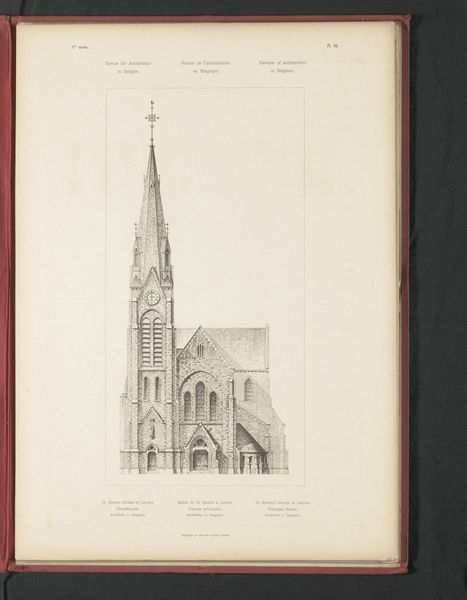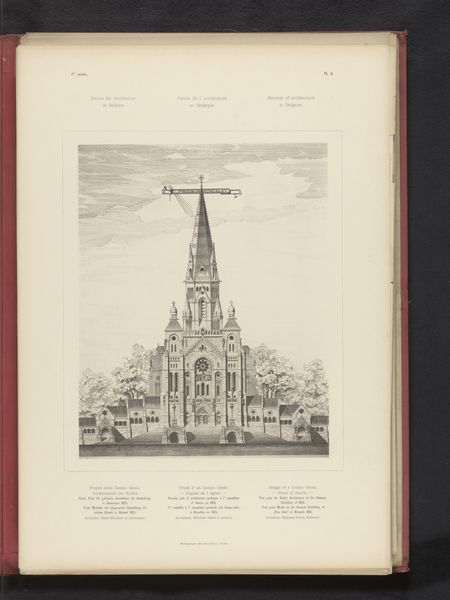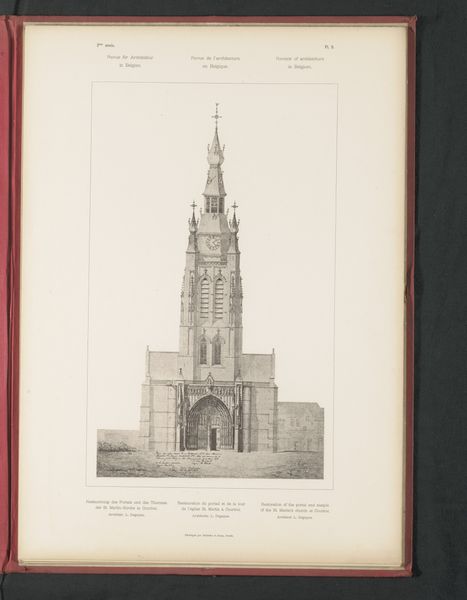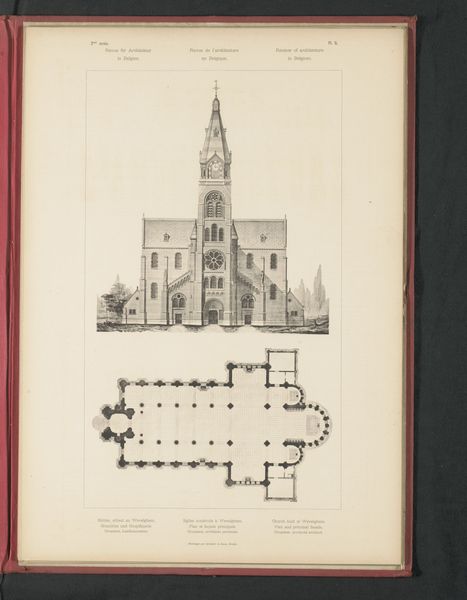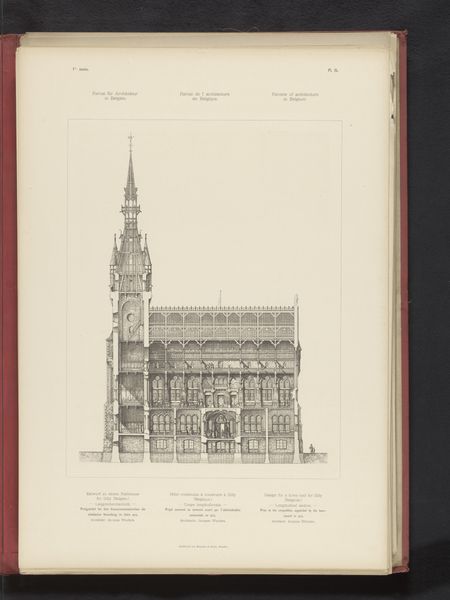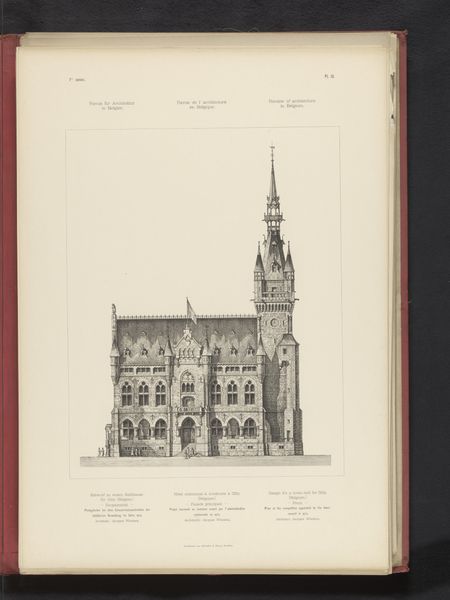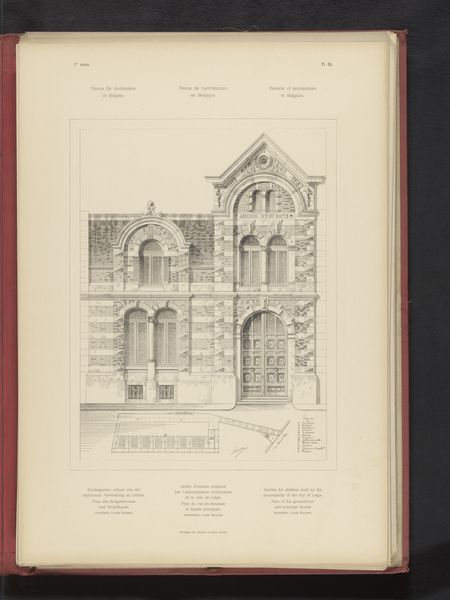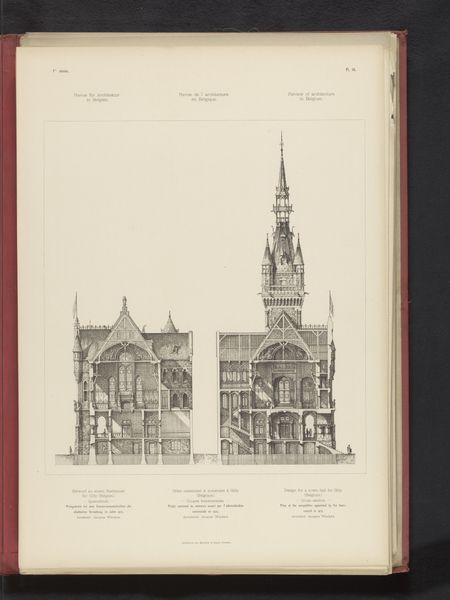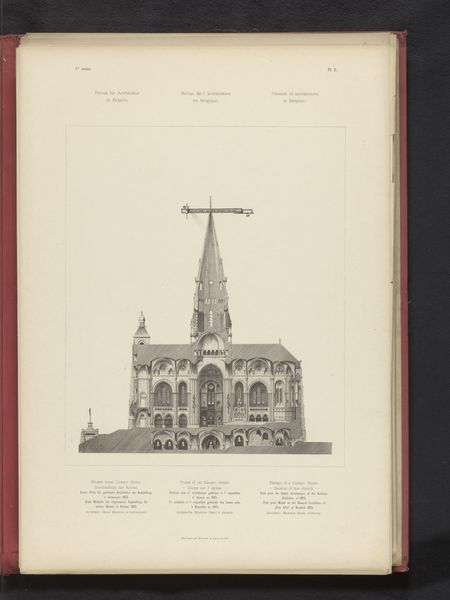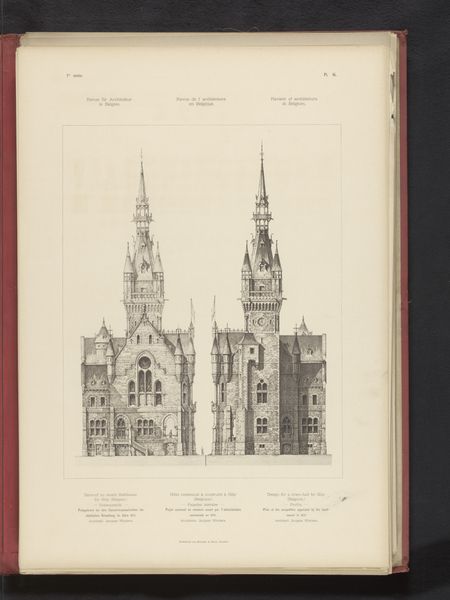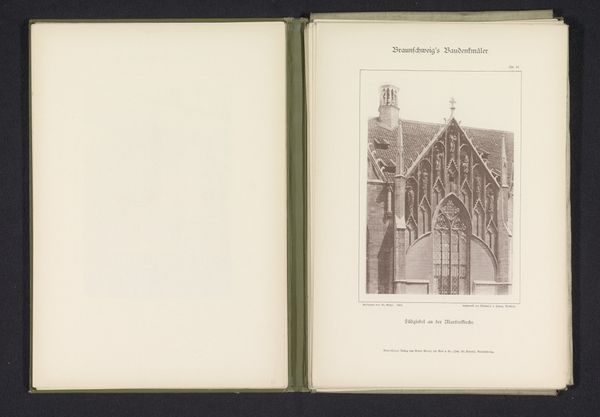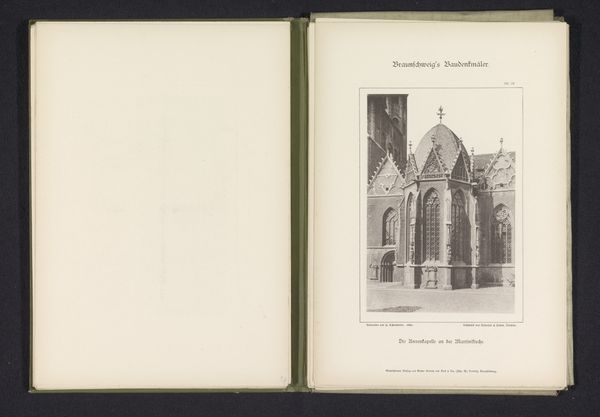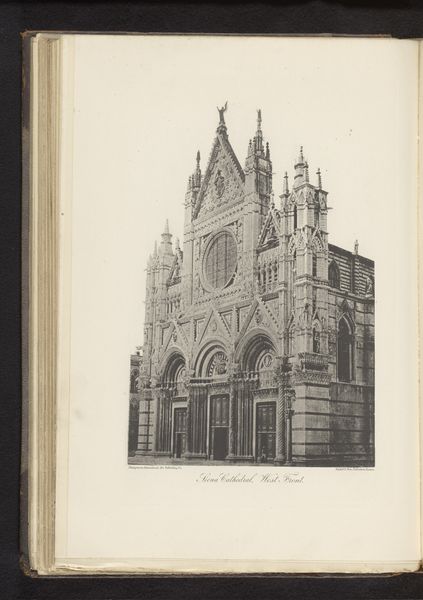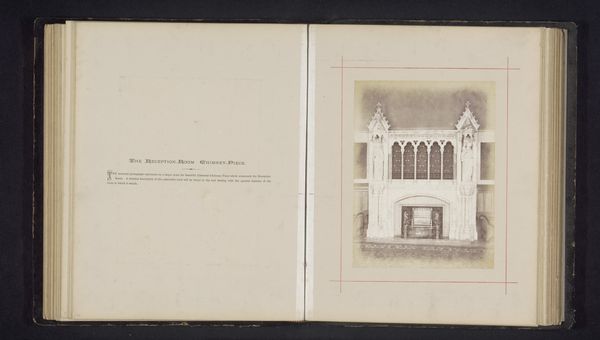
Reproductie van een ontwerp van de Sint-Servaaskerk in Schaarbeek, door Gustave Hansotte before 1893
0:00
0:00
drawing, engraving, architecture
#
drawing
#
geometric
#
line
#
cityscape
#
academic-art
#
engraving
#
architecture
Dimensions: height 354 mm, width 217 mm
Copyright: Rijks Museum: Open Domain
Curator: This engraving, "Reproductie van een ontwerp van de Sint-Servaaskerk in Schaarbeek, door Gustave Hansotte," offers a fascinating glimpse into late 19th-century architectural design. Editor: The verticality immediately strikes me. That pointed spire really commands attention, doesn't it? Such precision in the lines too. Curator: It does, and I think that's intentional. Hansotte likely sought to project power, faith, and tradition in an era of rapid social and industrial change. Churches then became these anchors in times of instability. The late 19th-century saw Belgium grappling with increasing secularism and the rise of socialist movements, making these buildings symbolic. Editor: Yes, and structurally, observe the perfect symmetry, a very stable structure using linear details that lend it a distinctive quality, even at this distance. Note the detailed schematics just beneath the architectural elevation that clearly display the intended floor plan and key architectural elements. Curator: Precisely! It speaks to a deeply rooted sense of order. The church offered a spatial and symbolic contrast to the burgeoning, often chaotic, industrial city. These structures also operated within a network of power relations, solidifying religious institutions influence. Editor: I notice in the inscription, it's referred to as belonging to an architectural journal called "Series for architecture in Belgium," further suggesting it's appeal to a learned community deeply enmeshed in Neoclassical trends. This type of art, this line art in particular, serves the purpose of being distributed on a mass scale. Curator: So true, especially considering the growth of urban areas such as Schaerbeek in the 19th century. It speaks to a yearning for both the divine and the reaffirmation of social norms and identities. Editor: Indeed. I appreciate that combination of aesthetic formalism with social purpose here. It makes the artwork deeply rich. Curator: And for me, it illuminates that dynamic period through a really unique cultural lens, blending art, society and ideology so closely.
Comments
No comments
Be the first to comment and join the conversation on the ultimate creative platform.
